
ISSN: 2321 9653; IC Value: 45.98; SJ Impact Factor: 7.538
Volume 10 Issue XI Nov 2022 Available at www.ijraset.com


ISSN: 2321 9653; IC Value: 45.98; SJ Impact Factor: 7.538
Volume 10 Issue XI Nov 2022 Available at www.ijraset.com
Shailesh Kumar Dewangan1 , Vineeta Tigga2 , Meena Lakra3 , Preeti4
1Asst. Professor & HOD Department of Physics, Shri Sai Baba Aadarsh Mahavidyalaya Ambikapur(C.G.) 2, 3M.Sc. I Semester Physics, Shri Sai Baba Aadarsh Mahavidyalaya Ambikapur(C.G.)
4Asst. Professor Department of Physics, Shri Sai Baba Aadarsh Mahavidyalaya Ambikapur(C.G.)

Abstract: Life cannot be imagined without water. From the biological point of view such as man, animal, plant, water has many unique properties which are important for the spread of life. It fulfills this role by allowing organic compounds to react in those ways. All known forms of life depend on water. Many chemical elements are present in water such as chloride, nitrate, calcium carbonate, calcium, magnesium, iron, fluoride, sulfate, oxygen, hydrogen etc., along with bacteria are also present. If the presence of all these chemicals is up to a critical limit, then it is useful for humans and agriculture. But due to its deficiency or excess, there is a bad effect on the human body and on agricultural production. The main objective of our research is to make a comparative study of the Physio chemical properties of different water sources like river water, well water, self flowing water and underground water (Bore well water) in Ambikapur area, Surguja division of Chhattisgarh, INDIA. Which water is useful for us and which water is not useful. If not, how can it be used? We will study the presence and quantity of Chemicals like Conductivity, pH-value, Chloride, Nitrate, Calcium Carbonate, Calcium, Magnesium, Iron, Fluoride, Sulphate etc. In the water sample taken from all these sources.
Keywords: River water, Well water, Bore well water, Self flowing water, Conductivity, pH value, Physical properties, Chemical properties etc.
In Ambikapur district of Surguja division, samples of water sources like River water, Well water, Bore well water and Self flowing water have been taken within a radius of 15 km. The sample of river water flowing in Kardana village of Batauli block of Surguja district, whose geographical location is latitude 22.9075750 longitude 83.35.5100 , Bore well water sample was taken from Namnakala village of Ambikapur development block of Surguja district. whose geographical location is latitude 23.1272370 longitude83.1700920 , The sample of Well water has been taken from Hariharpur village of Ambikapur development block of Surguja district, whose geographical location is latitude 23152.458N longitude 0383949.093E. And the sample of self flowing water was taken from Kardana village of Batauli Block of Surguja district. whose geographical location is latitude 22.9108300 longitude 83.3538830 , The main objective of conducting research on water from different sources is that which of the water found in Ambikapur of Surguja division is good for our health and which water is useful for agriculture.

1) Conductivity: Conductivity is a measure of water’s capability to pass electrical flow. This ability is directly related to the concentration of ions in the water[1]. These conductive ions come from dissolved salts and inorganic materials such as alkalis, chlorides, sulfides and carbonate compounds [2]. Compounds that dissolve into ions are also known as electrolytes [3]. The more ions that are present, the higher the conductivity of water.
2) pH value: pH is a determined value based on a defined scale, similar to temperature. This means that pH of water is not a physical parameter that can be measured as a concentration or in a quantity.[4],[5]
3) Density: The density of water is the weight of the water per its unit volume, which depends on the temperature of the water. The usual value used in calculations is 1 gram per milliliter (1 g/ml) or 1 gram per cubic centimeter (1 g/cm3). [7]
4) Surface Tension: "The property of the surface of a liquid that allows it to resist an external force, due to the cohesive nature of its molecules."[8]
5) Viscosity: The viscosity of a fluid is a measure of its resistance to deformation at a given rate. For liquids, it corresponds to the informal concept of "thickness": for example, syrup has a higher viscosity than water.[9]
ISSN: 2321 9653; IC Value: 45.98; SJ Impact Factor: 7.538 Volume 10 Issue XI Nov 2022 Available at www.ijraset.com

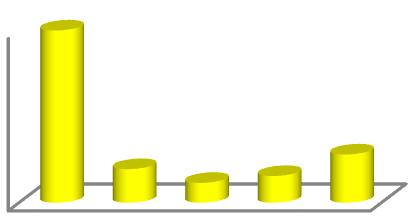
We are using experimental Method as Methodology in this research, in which we have taken research field Ambikapur area of Surguja division of Chhattisgarh. During our research, we took an area of 15 km radius in Ambikapur district. And Various sources of water found in the area like Well water sample, Self flowing water from any source of water, River water sample and Bore well water sample were collected. The physio chemical properties of all these samples collected were studied. In which we studied the presence and quantity of Conductivity, pH value, Chloride, Nitrate, Calcium, Carbonate, Magnesium, Iron, Fluoride, Sulphate etc. which are as follows
Bore well water

Conductivity Micro mhos/cm 348 140 484
pH Value pH Scale 7 7.2 6.4 8.5 7
Total alkalinity mg/l 200 125 49.4 38.42 184.4 Chloride mg/l 200 39 23 31 56 Nitrate mg/l 45 10 Total Hardness(CaCo3) mg/l 200 148.2 47.5 43.7 176.7 Calsium(Ca) mg/l 75 40.28 10.64 9.88 50.92 Magnesium(Mg) mg/l 30 11.54 5.07 4.61 12 Iron(Fe) mg/l 0.1 Fluoride mg/l 1 0.32 0.28 0.1 0.28 Sulphate mg/l 200 26 8 3.88 21
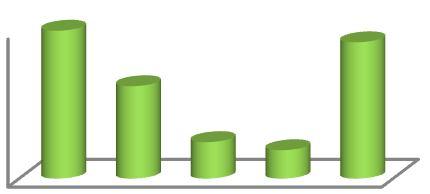
The pH value of water obtained from bore well is normal, pH value of well water and self flowing water is also almost normal. But the pH value of the water obtained from the river is higher than normal. That is, the water of the river is alkaline. Chloride content is very less in all the water samples taken and the amount of chloride in bore well water is more as compared to the water samples taken from well and river. Whereas the amount of chloride in self flowing water is the least.

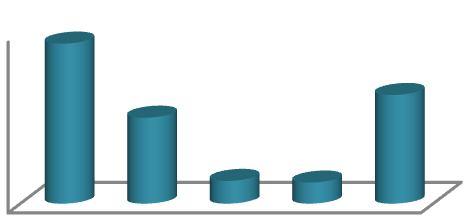
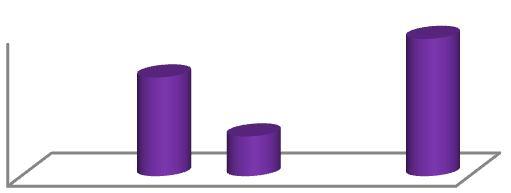
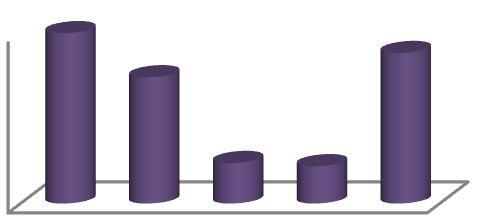
0 5 10 15
5.07 4.61
12
Magnesium(Mg) in (mg/l)
0 0.02 0.04 0.06 0.08 0.1 0.1 Iron(Fe) in (mg/l)
ISSN: 2321 9653; IC Value: 45.98; SJ Impact Factor: 7.538
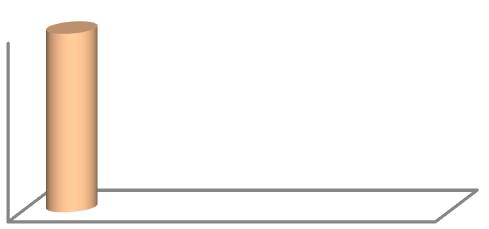

Volume 10 Issue XI Nov 2022 Available at www.ijraset.com
0 50 100 150 200 200 26 8 3.88 21
Sulphate (SO4) in (mg/l)
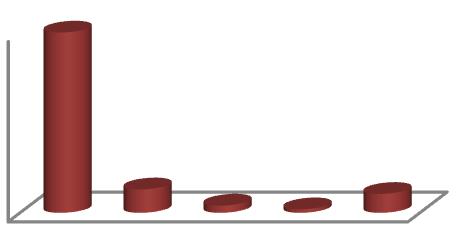


The amount of CaCO4 and Ca in all water samples is less than the critical value. And the order of quantity in these four water samples is the highest of bore well water, followed by well water and its quantity in both the other samples is very useful. Similarly the amount of Mg and SO4 in all water samples is less than the critical value. And among these four water samples, the order of quantity is highest in borewell water, followed by well water and very less in both the other samples. Iron was not found in all four samples.
The water of the river flowing from Kardana village of Batauli block of Surguja district is alkaline. Because the pH value of the water sample taken from this river is more than 7. The amount of chloride is very less in all the water sources found in Surguja district. Hardness is less in the water of different sources of water found in Surguja district. And the amount of calcium is also very less. Iron was not found in the water taken from different sources of water, so iron has not been dissolved in the water found in Surguja district. And the amount of SO4 is very less than normal, only about 10%.
[1] EPA.(2012).5.9Conductivity.InWater:MonitoringandAssessment.Retrievedfromhttp://water.epa.gov/type/rsl/monitoring/vms59.cfm
[2] Perlman, H. (2014). Electrical Conductivity and Water. In The USGS Water Science School. Retrieved from http://ga.water.usgs.gov/edu/electrical conductivity.html
[3] Milliequivalents, Millimoles, and Milliosmoles (Powerpoint). (n.d.). In University of Michigan.Retrieved fromhttp://sitemaker.umich.edu/tutorial/files/handout_milliequiv.pdf
[4] Merriam Webster.(2013).pH.InMerriam WebsterDictionary.Retrievedfromhttp://www.merriam webster.com/dictionary/ph
[5] Ophardt,C.E.(2003).pH.InVirtualChembook.Retrievedfromhttp://www.elmhurst.edu/~chm/vchembook/184ph.htm
[6] Nave, C. R. (2001). pH as a Measure of Acid and Base Properties. In HyperPhysics. Retrieved fromhttp://hyperphysics.phy astr.gsu.edu/hbase/chemical/ph.html
[7] https://www.thoughtco.com/what is the density of water 609413
[8] https://www.usgs.gov/special topic/water science school/science/surface tension and water?qt science_center_objects=0#qt science_center_objects [9] https://en.wikipedia.org/wiki/Viscosity
[10] HananAlwediyani,Aisha Almasoudi,Anwar Abdulrahman“TheChangeinPhysicalPropertiesofMagneticWater”
[11] Joshi,K.,Kamat,P.,INDIAN,J.Effectofmagneticfieldonthephysicalpropertiesofwater.J.Ind.Chem.Soc.43:620 622.1966
[12] HananAlwediyani,Aisha Almasoudi,Anwar Abdulrahman“TheChangeinPhysicalPropertiesofMagneticWater” [13] https://www.fondriest.com/environmental measurements/parameters/water quality/conductivity salinity tds/ [14] SurrayaShahab,aGhulamMustafa,a,*ImranKhan,aMuhammadZahid,b” EFFECTSOFFLUORIDEIONTOXICITY ON ANIMALS, PLANTS,ANDSOIL HEALTH:AREVIEW”ResearchreviewFluoride50(4)393 408October December2017
